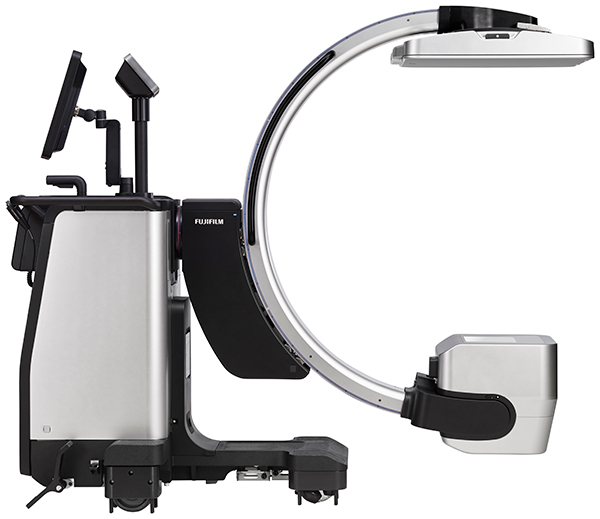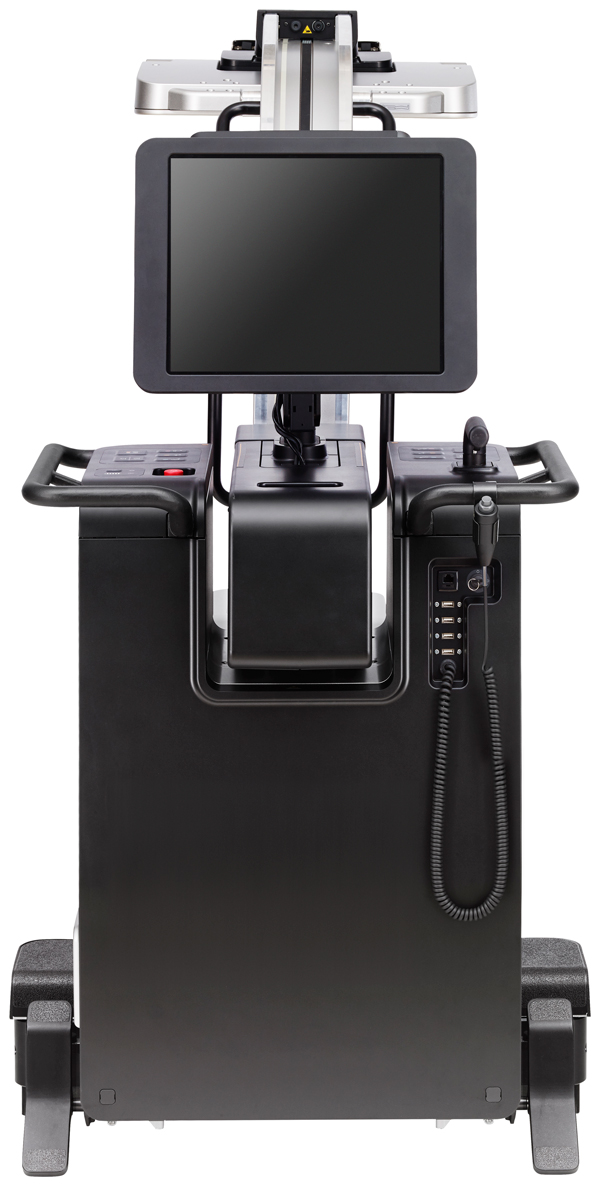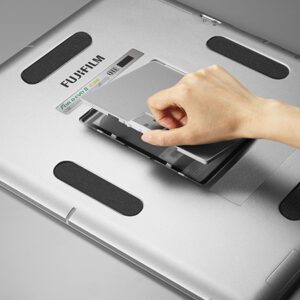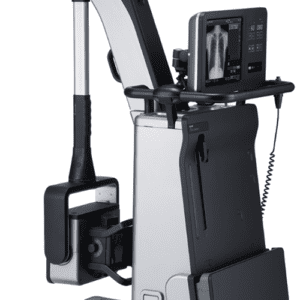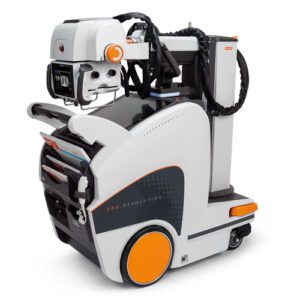Description
Large Imaging Area
The FDR Cross offers up to twice the imaging area of standard c-arm solutions with detector sizes of up to 17×17 inches. Additional coverage allows for full-field visualization throughout operating procedures, matching the coverage possible on pre and postoperative x-ray imaging. Smaller imaging areas can be selected on demand for reduced patient doses.

Fully Wireless Operation
Onboard battery power for up to 8 hours of completely wireless operation. Battery-powered fluoroscopy and x-ray exposures remove the need for power mid-procedure for improved cable management in crowded OR’s while allowing for rapid repositioning for emergency and ICU use.

Removable and interchangeable detectors
Advanced fluoroscopic and radiographic image quality powered by Fujifilm’s FDR D-EVO III line of digital flat panel detectors. Choose from 17×17”, 14×17”, and 10×12” flat panel sizes in a removable cassette-sized format for convenient bedside use. A single FDR Cross can also be configured with additional wireless FPDs for improved portable imaging workflows, or even with multiple fluoroscopic imaging housings to allow for the exchange of panel sizes between cases in accordance with clinical imaging needs.

Maneuverability and System Positioning
Unprecedented system maneuverability and mobility on an ultra-lightweight 549-pound platform. FDR Cross’ highly maneuverable and ergonomic design allows positioning for all core c-arm procedures while maintaining operator comfort through a design that is over 150lbs lighter than regular compact c-arms. The added ability to offset the x-ray tube from the fluoroscopic detector housing allows for wireless x-ray imaging akin to that of a regular portable x-ray, including for mobile and even standing chest exams.

Features:
Surgical Applications
Advanced fluoroscopic imaging capabilities powered by Fujifilm’s proprietary Dynamic Core Engine image processing technology (DCE). FDR Cross’s slim format detector housing ensures maximum surgical access while maintaining a broad imaging field. The system’s unique large format imaging area allows for visualization of anatomical reference points normally not possible without system repositioning while the use of single-touch imaging area adjustments makes it easy to toggle between partial and full-field imaging for dose optimization throughout each procedure.

Portable X-Ray
Maximize equipment utilization by performing fluoroscopic, verification and portable imaging with a single imaging system. Portable radiographic imaging can be executed using an additional FDR D-EVO III panel or by simply removing the onboard panel from the fluoroscopy housing, thereby streamlining image acquisition and avoiding the need to bring in additional imaging systems. This unique approach facilitates all new workflows for interventional and validation imaging in the ER and OR while dramatically altering imaging capabilities for smaller surgical centers that may not have pre and post-operative static imaging services available.

FDR D-EVO III
Fujifilm’s FDR D-EVO III flat panel detector features an innovative flexible film-based capture circuitry layer engineered to help reduce signal blur and provide excellent DQE and dose performance. Eliminating the conventional glass panel layer inside significantly reduces the panel weight and improves durability. Like other FUJIFILM produced FPDs, FDR D-EVOIII includes proprietary Irradiated side sampling technology (ISS) for increased image sharpness and improved dose efficiency compared to regular FPDs where the TFT array is located on the non-irradiation side.
Hydro AG ™ Antibacterial Coating
Added antimicrobial protection with Fujifilm’s exclusive Hydro AG antibacterial coating on select high-touch surfaces including the exposure hand switch and the detector’s outer surfaces. Fujifilm’s Hydro AG regenerative antibacterial silver-ion coating is 99.99% effective against most common bacteria, 100 times* more effective than traditional coatings, and 10,000 times* more effective than surfaces with no coating.
*Based on residual bacteria counts

